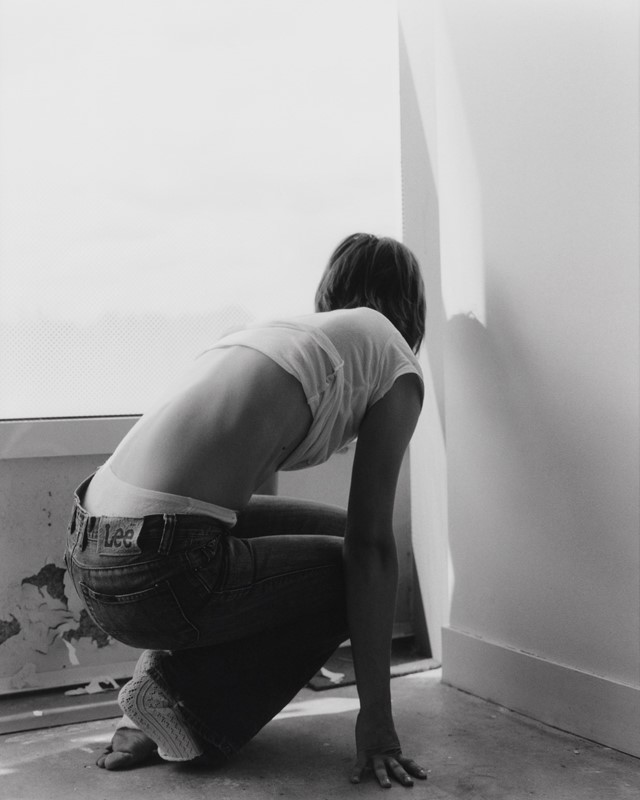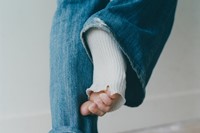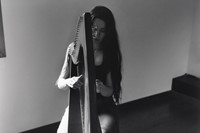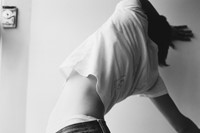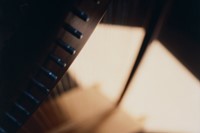Titled Dissonance, the artist’s new Los Angeles show blends performances by Roísín Berkeley and Ness Uronich, an Irish harpist and Ukrainian dancer who never met
There’s something amazingly honest about Senta Simond’s work. In both her fashion imagery and personal projects, the Swiss artist explores the bodies of her female subjects from every angle, often assuming a vantage point so close or awkward that it teeters on the edge of uncomfortable. Given her prospecting style, Simond’s portraits could easily feel intrusive, yet they somehow never do. Perhaps this is because she approaches her practice with gentle curiosity that strips away any pretence, grasping a raw sort of truth in her subjects – a vulnerability – that could only really be offered up through a mutual state of trust. “What’s most important to me is to find something honest with my pictures: some emotion,” she tells AnOther. “I need to feel a connection.”
Simond’s new exhibition Dissonance at Webber Gallery in Los Angeles, a version of which was first shown at MEP in Paris last year, sees the artist tenderly venture into experimental new terrain. Playing on the idea of musical discordance, it creates a visual and sound dialogue between two women who have never met – Irish harpist Roísín Berkeley and Ukrainian dancer Ness Uronich – whom Simond spent eight months working with separately throughout 2023. Over innumerable FaceTime calls and several trips overseas, the artist shot both women multiple times, as well as inviting them to film themselves in her specific style, resulting in a sensorially textural body of work which explores “our relationships with ourselves, others, and our environment”. Building upon the initial Paris show, this LA exhibit also features a few works from Simond’s debut book Rayon Vert, which investigates the special relationship between the artist and her female subjects.
“A lot of things happened by chance in this project,” says Simond. “I always wanted to work with a dancer and I knew I wanted to work with a musician. These people just arrived in my life at the same time.” Simond first heard Berkeley while listening to a radio show and was so struck by her music that she felt compelled to reach out to her. “She has a very specific way of playing which is almost deconstructed,” says the photographer. “She’s experimented a lot with her sound and I think it's really beautiful.” Not long after, she met Uronich in a bar in Paris through a mutual friend. “At first, I didn’t think to pair them together, but sometimes you have to try things out intuitively,” she says. “It’s weird, the moment you’re open and curious, how things fall into place.”

Entering into their respective private worlds, the show presents gestural fragments of the two artists alongside each other. “I never worked in this way before,” she says of the self-shot elements of the series. “You lose a bit of control aesthetically, but I really love the surprise of what came back.” Through a patchwork of video, sound and shots which skew perspectives and “blur the authorship” of the portraits, beautiful flashes of both women range from Uronich’s curled foot peeking out from a frayed pair of jeans to Berkeley’s long red hair tumbling over the edge of her harp as she plays. “Pairing them is not so harmonious, and I didn’t want it to be harmonious, but also in the end [the two] do kind of work together,” says Simond.
While the two women are different in many ways, Simond seems to admire both for the same reasons – a self-sprung originality to their work and youthful optimism about life. “I think they both have a very anti-conformist and unconventional way of working,” she says. “They’re the same age and are both at building moments of their careers. What surprised me about Roisin is that she’s quite wild,“ she says of the harpist, who comes from a remote rural town called Knock on the east coast of Ireland. “Her family [practice] paganism and are really in tune with the land. They’re quite spiritual and I think she’s a little bit like that, too. It makes so much sense when you listen to her work.”
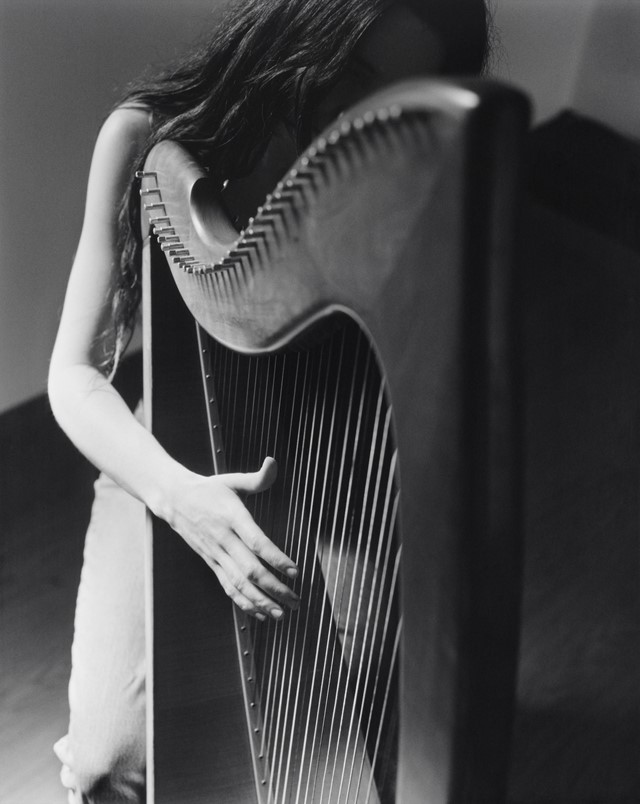
Starting out as a model in Ukraine – where she had to return from Paris to be with family amid the conflict – Uronich’s self-taught approach to dance is also totally organic. “She’s like an autodidact,” says the photographer. “She’s got so much energy and she’s so positive, even during everything happening in her country. The energy she brings is very free. It was really nice to work with her.” Amazingly, the harpist and dancer not only met for the first time at the launch event for Dissonance in Paris last year, but they also didn’t know their portraits were being intertwined in the exhibition until they arrived that evening. “They were really touched,” says Simond of the surprise reveal.
Taking on a new life in the LA space, which is filled with more natural light and bigger rooms than MEP, Simond hopes that visitors will experience an atmosphere of intimacy and connection – feelings that have been central to her practice since the publishing of her debut book in 2018, and are felt more strongly than ever in this new project. “The special thing about being a photographer is how quickly you can enter the private world of others,” she says. “I feel it’s a very atmospheric project, because of the sounds, the video, the light. I hope that visitors can really enter the work.”
Dissonance is on view at Webber Gallery Los Angeles until 13 April 2024.
